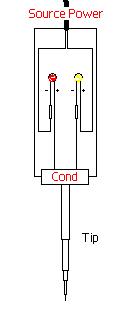Posted: August 16, 2006 at 8:41 PM / IP Logged
Posted: August 16, 2006 at 10:27 PM / IP Logged
Posted: August 18, 2006 at 1:08 PM / IP Logged
Posted: August 20, 2006 at 12:58 AM / IP Logged
Posted: August 20, 2006 at 1:04 AM / IP Logged
Posted: August 20, 2006 at 5:37 PM / IP Logged
Posted: August 20, 2006 at 11:34 PM / IP Logged
Posted: August 23, 2006 at 11:32 AM / IP Logged
Posted: August 23, 2006 at 3:21 PM / IP Logged
Posted: August 24, 2006 at 10:10 PM / IP Logged
Sorry, you can NOT post a reply.
This topic is closed.
 Printable version
Printable version


| You cannot post new topics in this forum You cannot reply to topics in this forum You cannot delete your posts in this forum You cannot edit your posts in this forum You cannot create polls in this forum You cannot vote in polls in this forum |

| Search the12volt.com |
Follow the12volt.com 
Monday, May 20, 2024 • Copyright © 1999-2024 the12volt.com, All Rights Reserved • Privacy Policy & Use of Cookies


Monday, May 20, 2024 • Copyright © 1999-2024 the12volt.com, All Rights Reserved • Privacy Policy & Use of Cookies
Disclaimer:
*All information on this site ( the12volt.com ) is provided "as is" without any warranty of any kind, either expressed or implied, including but not limited to fitness for a particular use. Any user assumes the entire risk as to the accuracy and use of this information. Please
verify all wire colors and diagrams before applying any information.






 the "SourcePower" is connected to both positive and negative, and one can follow where they connect to the leds. The "Tip" of this testlight, can tap either positive or negative. The tapping of the powersource will determine which LED lights up. "Cond" Is basically a piece of metal conducting from the tip to both leds. However the problem Im having is that as soon as "SourcePower" is connected, both led's light up. I realized that because of "Cond", its allowing power to be passed between both LEDs. I believe that all I need is two DIODES. Connect one diode to each led between the "Cond" and LED.
So the question is, is this the correct approach? And also which way should I put the diodes in.
Please help.
the "SourcePower" is connected to both positive and negative, and one can follow where they connect to the leds. The "Tip" of this testlight, can tap either positive or negative. The tapping of the powersource will determine which LED lights up. "Cond" Is basically a piece of metal conducting from the tip to both leds. However the problem Im having is that as soon as "SourcePower" is connected, both led's light up. I realized that because of "Cond", its allowing power to be passed between both LEDs. I believe that all I need is two DIODES. Connect one diode to each led between the "Cond" and LED.
So the question is, is this the correct approach? And also which way should I put the diodes in.
Please help.



